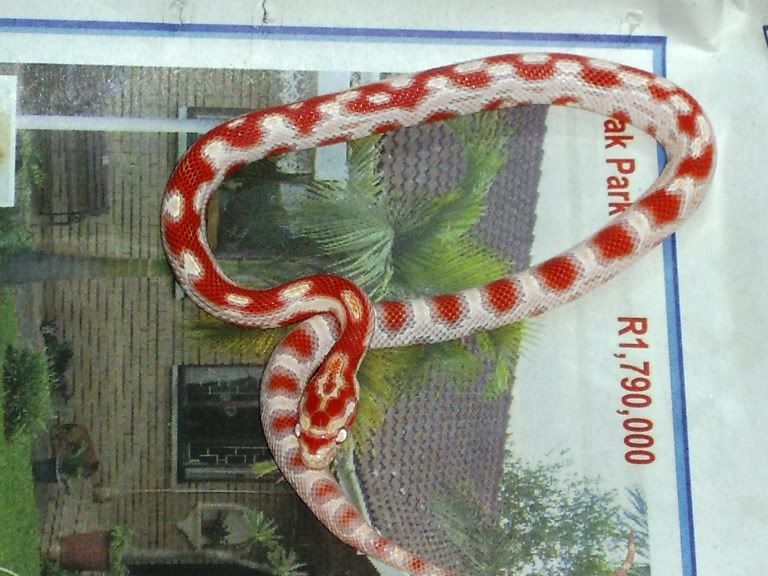Velvet said:
Hi there,
This is a corn that is RO x Candy Cane...it doesn't look anything like a normal Amel to me...

Forgive me for asking, but what is it that is so different about that particular amel?
I see a really nice, high-white amelanistic hatchling with a partial zig-zag dorsal pattern. Other than that...I still see an amel. A really nice one...but "just" an amel. It is neither reverse okeetee nor candycane in appearance, nor is it what I would expect a "perfect mix" of RO and CC to look like. Perhaps as it matures it may take on a look that is slightly more RO or CC, but, to be honest, I see a really pretty, high-white amel. And nothing more. You can already see the oranges developing, too.
I don't mean that as an insult but...it is a legitimate question.
Cornsnakes cannot be heterozygous for reverse okeetee. They also cannot be heterozygous for candycane. The reason is because these 2 looks are not created with one simple recessive gene. The only thing that can be guaranteed from the breeding of a candycane X a reverse okeeteee is 100% amel offspring.
Yes...some of the offspring MAY resemble one or both of the parents. As we all know...there are no real "guarantees" when it comes to the patterning of offspring. But the potential for the offspring to look like a cross between an RO and a CC is the same as the potential for the offspring of 2 beautiful Okeetee corns to look absolutely normal and not at all like an okeetee. That is...very low. There are simply too many genes at work to make any sort of reasonable estimation when outcrossing a line-bred pattern.
When you take 2 okeetee phase parents, and breed them, you are combining several gene-types which both parents posess. This exponentially increases the probablility that the offspring will inherit the look of the parent. When you combine an RO and a CC, you are combining several gene types that only one of the parents posess, thereby minimizing the potential for the offspring to inherit the look of it's parents.
Since RO and CC corns are both line-bred to be exceptionally high-white amels, it is reasonable to assume that a percentage of the offspring will display a high-white background, because they are getting this gene combination from both parents. Ro tends more towards orange, where CC tends towards red. I would be very interested in updates on that amel as it matures, to say the least...

